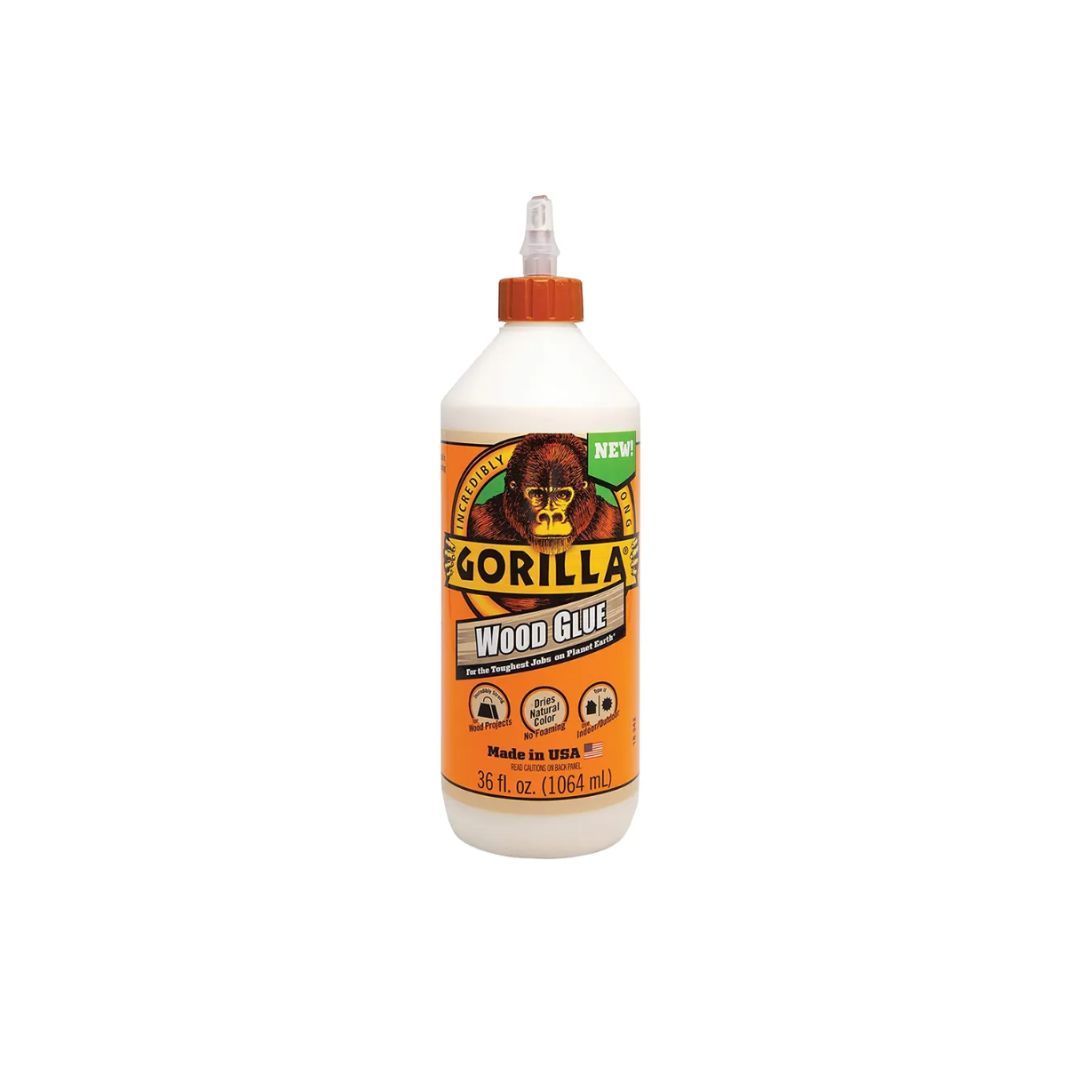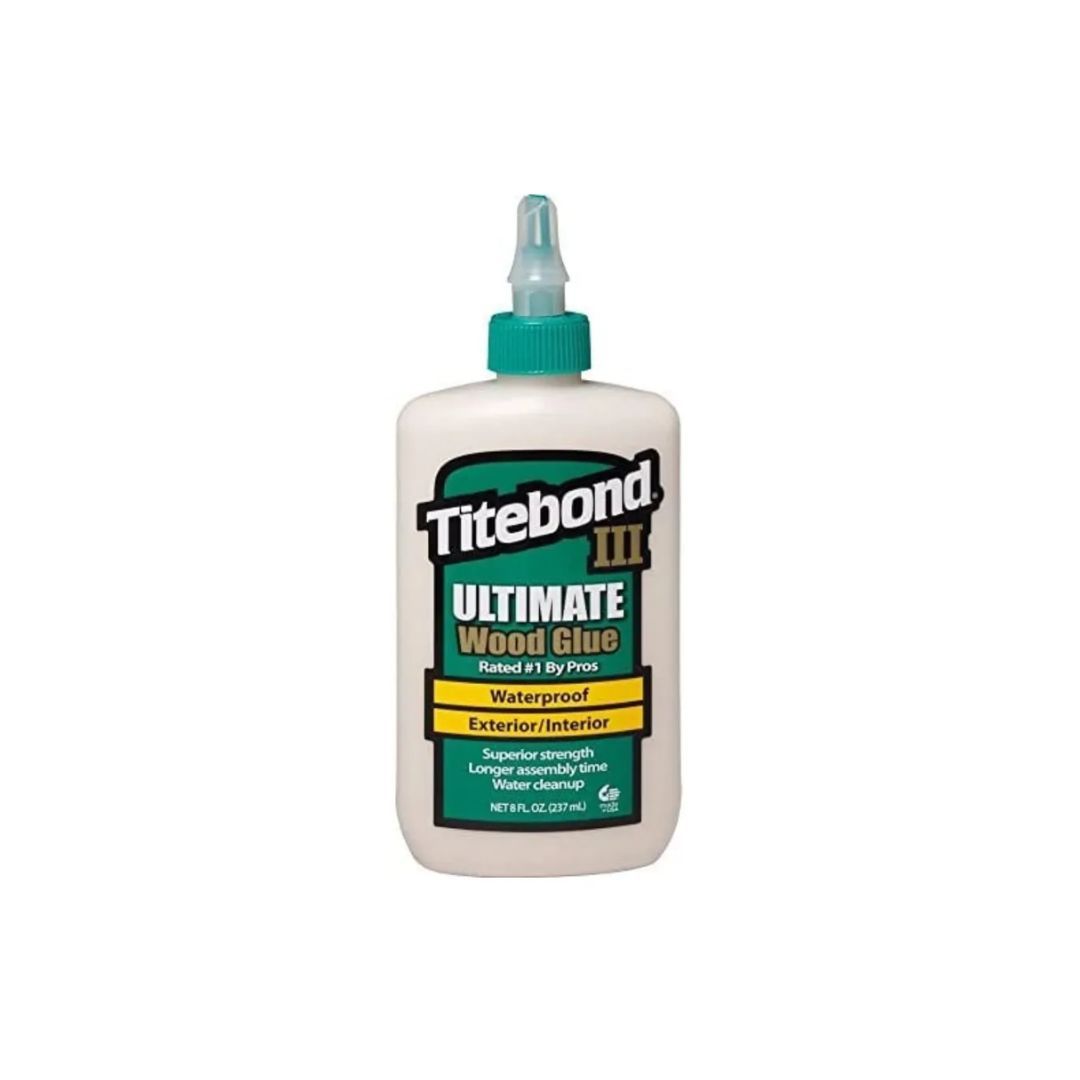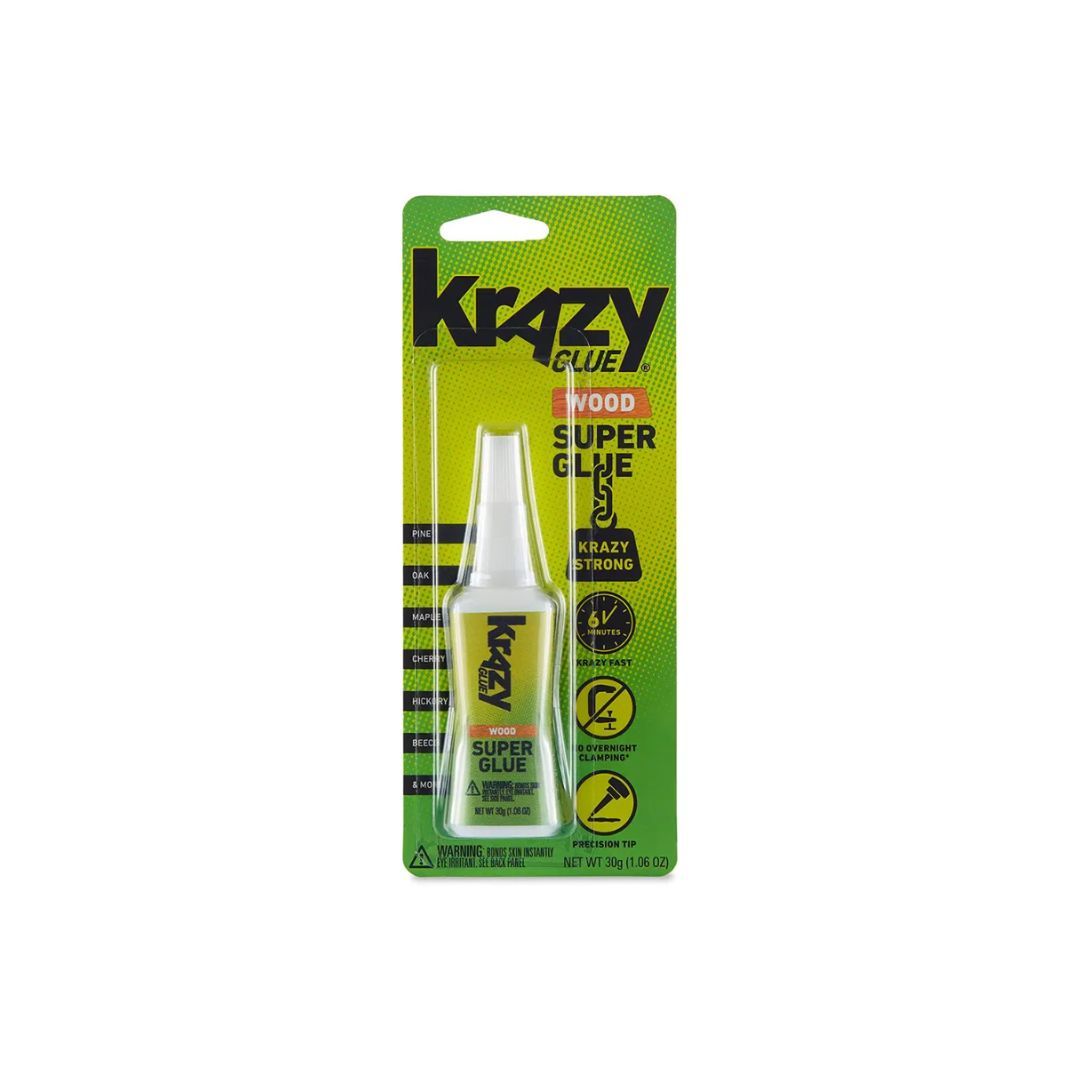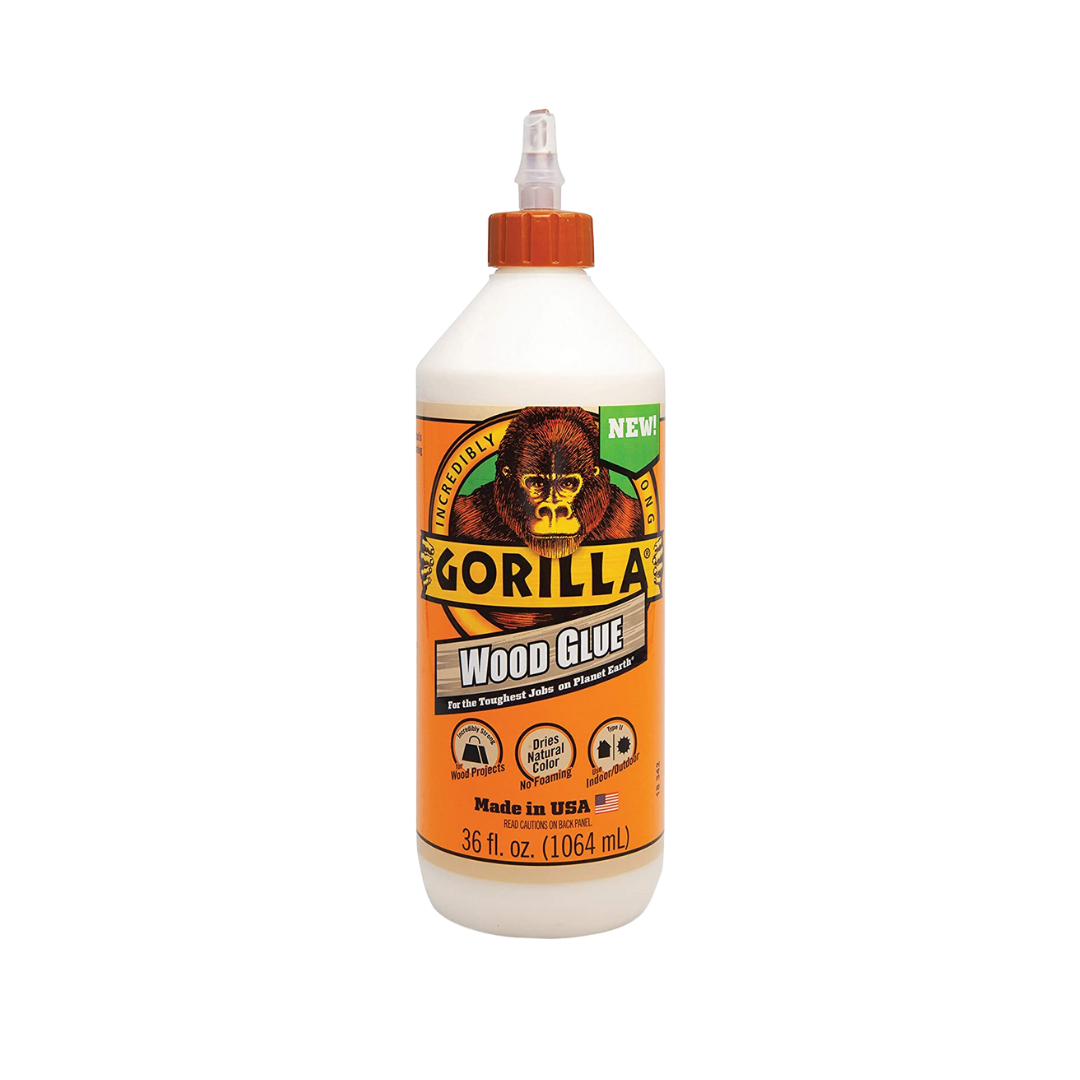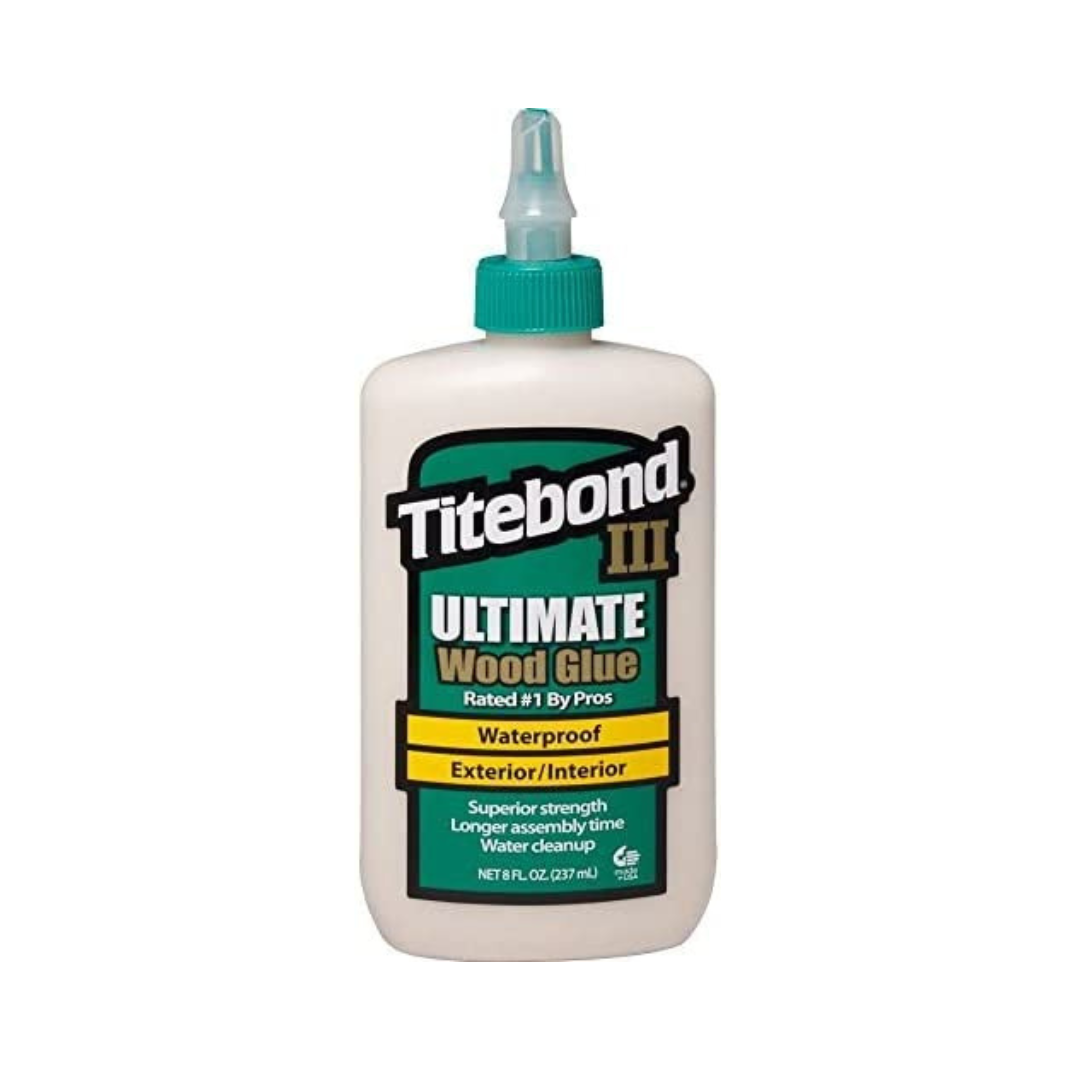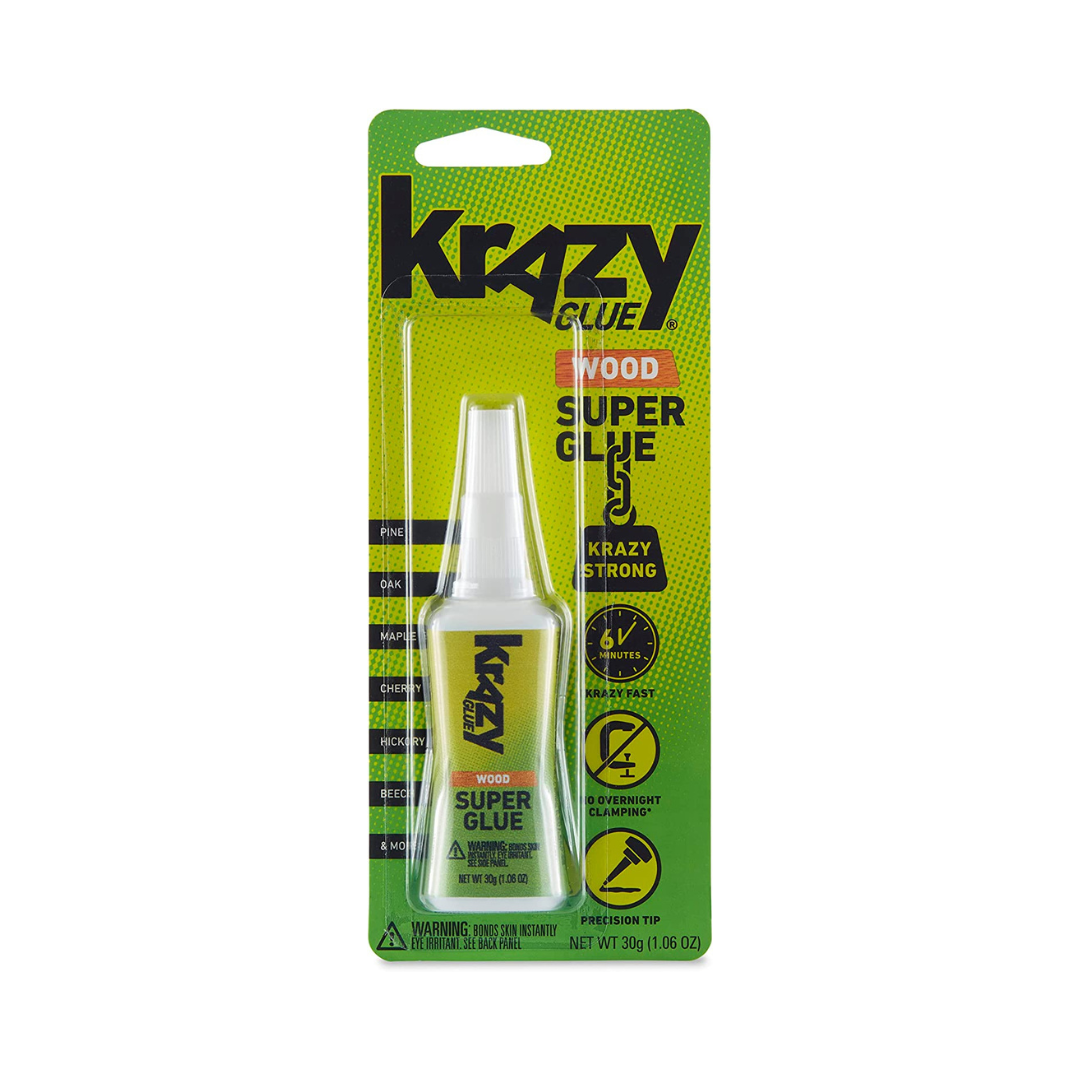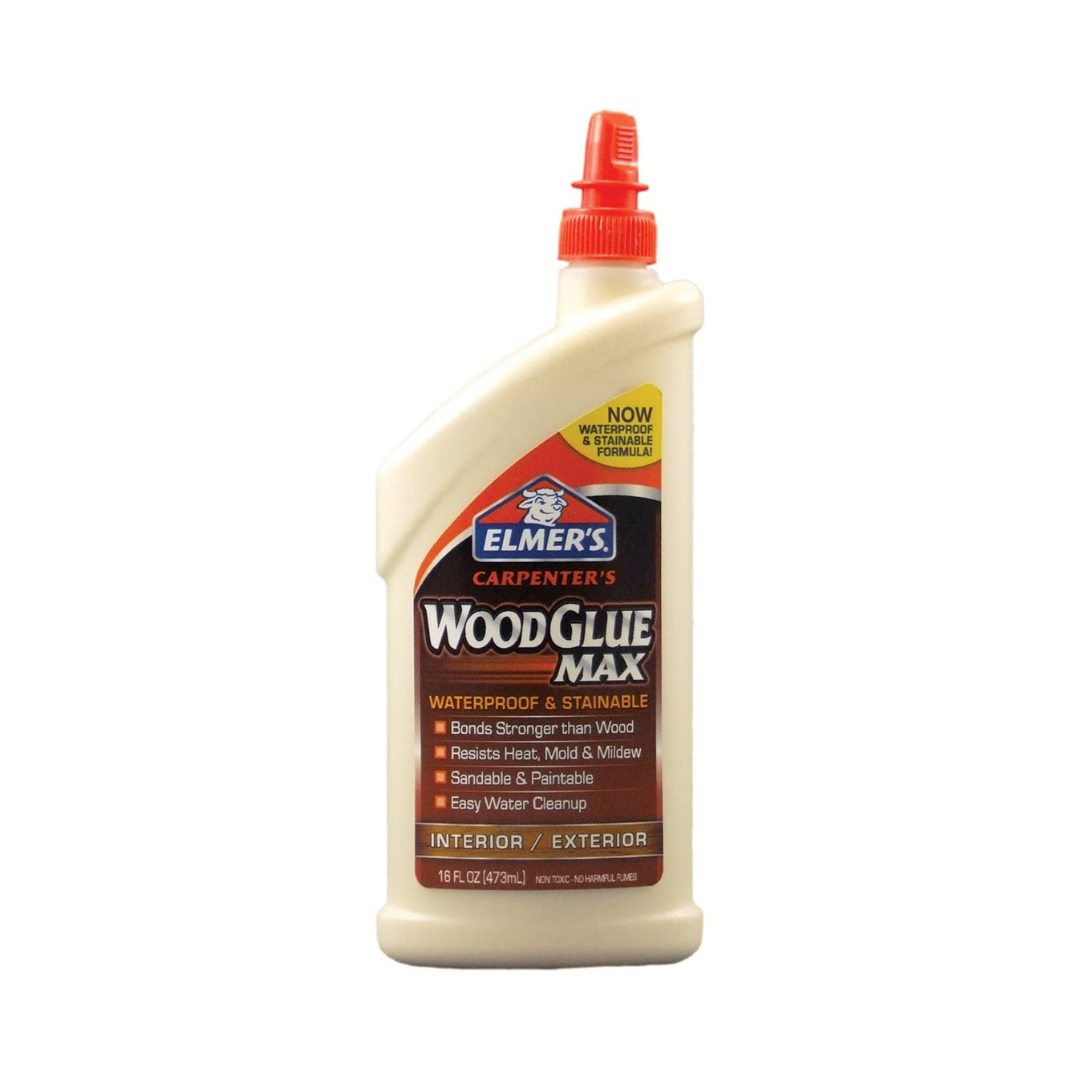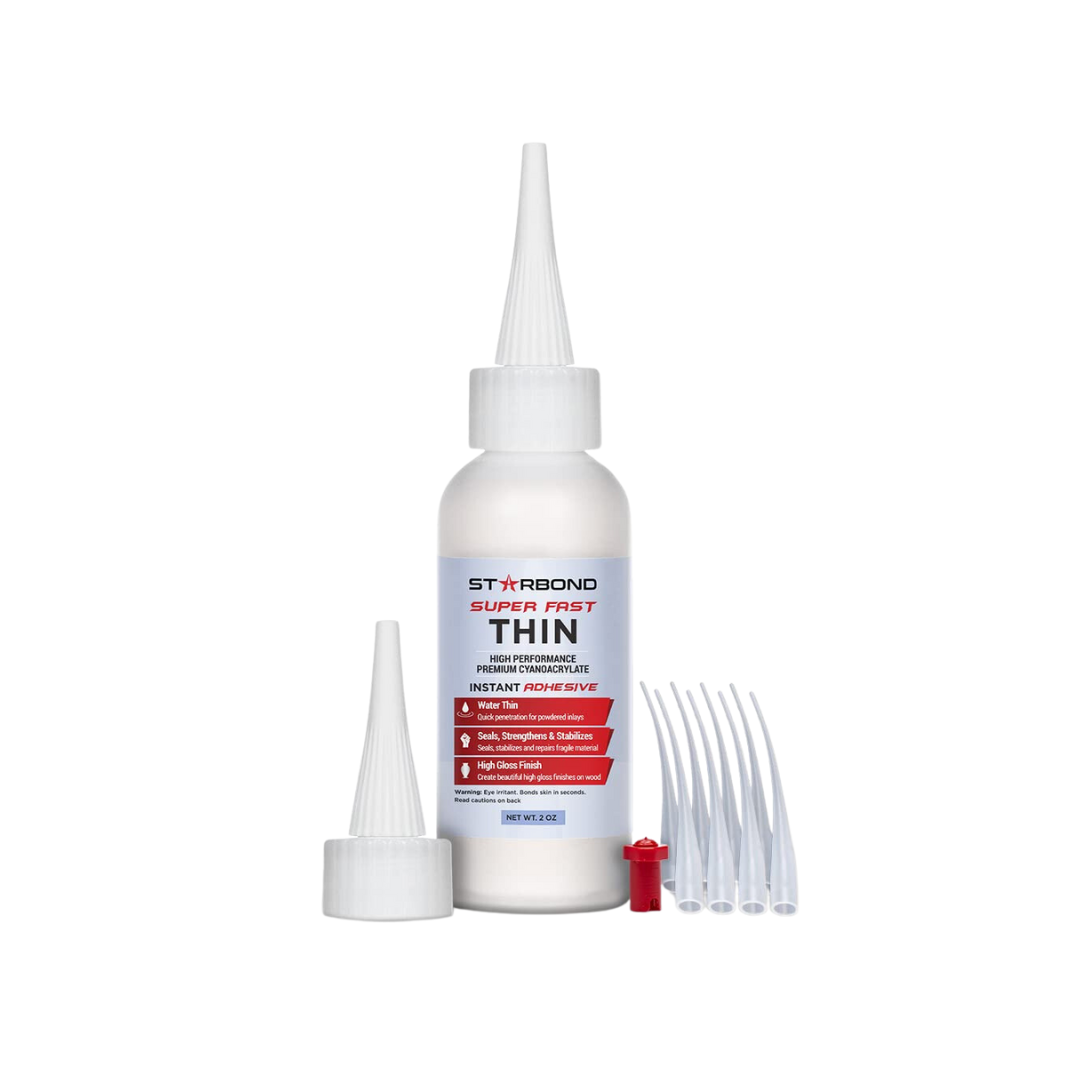We may be compensated if you purchase through links on our website. Our team is committed to delivering honest, objective, and independent reviews on home products and services.
- The best wood glue is the Gorilla Wood Glue because of its quick drying time and application for multiple different types of wood.
- We’ve researched multiple different wood glues, narrowing down between drying color, size, drying time, and the formula used to create a long-lasting woodworking project.
- Most wood glues cost between $10-$20, and most of ours cost $15 in this review, so each choice is a good value for your DIY projects.
Whether you’re making furniture, building a house, or working on a woodworking project, wood glue is an essential tool every DIYer should have. After carefully evaluating a variety of options, we’ve narrowed down the top five wood glues based on formula, drying time, and color to help you make the best decision.
At the top of our list is Gorilla Wood Glue, a premium 36-ounce bottle priced just over $15. With most quality wood glues ranging from $10 to $20, this option offers great value and long-lasting use.
We’ve also considered factors like strength and viscosity, helping you choose the ideal wood glue for your specific project. With so many options available, we’ve outlined the best choices to simplify your selection process..
Compare Top Wood Glues
| Product | Size | Drying Time | Drying Color | Formula |
|---|---|---|---|---|
| Gorilla Wood Glue | 36-ounce bottle | 20 to 30 minutes | Brown | Water-resistant |
| Titebond Ultimate Wood Glue | 36-ounce bottle | 1 hour | Brown | Waterproof |
| Krazy Glue Wood Glue | 30-gram bottle | 6 minutes | Clear | Water-resistant |
| Elmer’s Carpenter’s Wood Glue | 16-ounce bottle | 24 hour curing time | Brown | Waterproof |
| STARBOND Super Glue | Two-ounce bottle | 5 seconds | Clear | Waterproof |
| Product | Size | Drying Time | Drying Color | Formula |
Best For Large Projects: Gorilla Wood Glue
Pros and Cons
✔ Rated for indoor and outdoor use
✔ Dries to a natural color
✔ Works on composite wood as well as real wood
✘ Has specific application and storage temperature recommendations
✘ Has a water-resistant formula instead of a waterproof one
What Customers Are Saying
Customers were pleased that this glue worked on several types of wood, offered strong adhesion, and used a fast-drying formula. However, some customers struggled with the bottle, stating that it leaked from its nozzle. Once the glue hardened, the nozzle was difficult to unclog.
Strongest Hold: Titebond Ultimate Wood Glue
Pros and Cons
✔ Can clean up excess glue with water
✔ Can sand over it without softening the bond
✔ Has a safe solvent-free formula
✘ Has a light brown dried color that may not match all wood finishes
✘ Has a long clamp and cure time
What Customers Are Saying
Many customers praised this wood glue for being water-resistant and food-safe. They also mentioned its well-designed bottle. Some users did say that the bottle was too small to tackle big projects. Others said that it arrived with a clogged dispenser.
Fastest Drying: Krazy Glue Wood Glue
Pros and Cons
✔ Can wash and sand over it
✔ Dries clear for minimal visibility
✔ Works on maple, pine, birch, oak, and more
✘ Takes longer than six minutes to dry in humid conditions
✘ Comes in a small one-ounce bottle
What Customers Are Saying
Customers who gave this wood glue positive reviews said that it was long-lasting, fast-acting, and easy to use. However, negative reviews said that the adhesion wasn’t particularly strong and that the instructions were difficult to read.
Best For Outdoor Use: Elmer’s Carpenter’s Wood Glue
Pros and Cons
✔ Resists mold and mildew growth
✔ Comes in a large 16-ounce bottle
✔ Doesn’t have harmful fumes
✘ Requires 24 hours to fully cure
✘ Has a bulky bottle that may be difficult to grip
What Customers Are Saying
Customers who left positive reviews for this product said that it had a strong bond and a fast drying time. Select customers didn’t like how thick it was. Others had issues with the glue in the bottle drying out.
Best For Repairs: STARBOND Super Glue
Pros and Cons
✔ Comes with extension tips for precision work
✔ Can last for up to 30 months in storage
✔ Works on leather, rubber, and other materials besides wood
✘ Not as strong as typical wood glue
✘ Can bond your skin if you don’t wear gloves
What Customers Are Saying
Customers liked how thin this glue was because it penetrated cracks quickly and easily. They also said that it arrived well-packaged. However, users warned about applying it correctly the first try because as soon as it hit a surface, it hardened.
Types of Wood Glue
If you’re not a carpenter, it can be confusing to determine which wood glue to use and when to use it. Some glues work better than others depending on the wood you’re building with and the conditions you’re working under. For more information, read about the different types of wood glue below.
Polyvinyl Acetate
When a project instructs you use wood glue, it most likely means polyvinyl acetate (PVA), unless otherwise specified. This glue is inexpensive, nontoxic, and very efficient—though you should still consult the manufacturer’s instructions for accurate uses, clamp duration, and recommended drying time. And while soap and water clean-up (while wet) may tempt you to “apply liberally”, take care where the glue touches, as it can inhibit stain from soaking into the wood once dry. This highly-effective bonding agent contains a cross-linking polyvinyl acetate which gives it water-resistant properties, thus it can be used on most outdoor projects. PVA has a modest tack, so you can make slight adjustments before it sets and should use clamps for 20-30 minutes to ensure a strong hold.
Common Uses: basic indoor woodworking, some outdoor woodworking, hobbies and crafts, cracked furniture.
Epoxy-Based
Epoxy-based glue is a solid choice for a variety of projects and is made from two components: a resin and a hardener. Both of these agents are liquid but once mixed together, a chemical reaction takes place that allows for a strong hold. It takes a little longer for this glue to cure, so it’s recommended that you clamp down your work for the ultimate bond. Many epoxy wood glues are intended for indoor use, so be sure to double-check product labels for a water-resistant glue if you making something for outside. Be cautious when using with this material; work in a well-ventilated space and mix small batches.
Common Uses: filling in gaps, bonding pieces of wood together
Polyurethane
One of the most durable wood glues is polyurethane. This strong, versatile glue is perfect for both indoor and outdoor projects due to its waterproof qualities. Polyurethane dries a natural-looking color, so it blends in seamlessly with wood. This substance cures in the presence of water, so you need to wet the surface of wood before applying the glue for the ultimate bond. Once the glue has dried, it can be sanded down and painted or stained.
Common Uses: indoor and outdoor applications, wood, plastic, stone, metal, ceramic, foam, glass, concrete, fabric
Cyanoacrylate
Often referred to as “super glue”, cyanoacrylate (CA) is generally used for small, quick repairs due to its speedy curing process. A hard, plastic-like bond occurs when this glue dries, but be careful because it can adhere to your skin in seconds. A gel-style CA is available which tends to stay in place better than the original formula.
Common Uses: small-scale fixes, hobbies and crafts
Hide Glue
Hide glue derives from rendered animal collagen and is one of the oldest known bonding agents, having been used for centuries. It’s nontoxic, has a strong tack, can be stained, and comes in a variety of strengths and colors. If you’ve ever worked with a hot glue gun, you’ve used this substance, as it’s what the glue sticks are made from. Some hide glues need to be heated and brushed on, while others come in a bottle with an applicator. It’s a popular choice because once cooled, the glue can be heated up again and manipulated as needed; this makes it the ideal adherent for antique and fabric repairs because it is reversible. This glue comes in handy for most projects, unless you need a waterproof option.
Common Uses: antiques, creating attractive “crackling” effects, cloth, glass, and leather, ideal for furniture, musical instruments, and veneer work.
Buyer’s Guide
After type, consider a wood glue’s strength, drying time, shelf life, viscosity, and color.
Strength
Wood glues can provide permanent or temporary bonds. For example, PVA and polyurethane fall into the former category, while CA is the latter type. If you’re building a piece of furniture, you want it to stay together permanently, so use a strong glue. For quick, minor repairs, a CA glue should suffice.
Drying Time
Think about how quickly you need your wood to dry. For fast projects, focus on epoxy or CA glue. However, if adhesive strength is more important to you than cure time and you’re fine with waiting longer, then stick with PVA or polyurethane glue.
Shelf Life
Different types of wood glue last longer than others, which may be a consideration if you’re only using a little of a large bottle. PVA and polyurethane glues last in storage for about a year before they begin to lose their effectiveness. CA glue can last much longer if it’s kept at the proper temperature.
Viscosity
Wood glue viscosity varies based on the type and brand. PVA, polyurethane, and epoxy glues are usually thicker than hide and CA glues. Glues with a thinner viscosity are better for filling small gaps or cracks, while thick glue is meant to join pieces of wood together.
Color
Some glue, such as PVA glue, dries tan or brown to match the wood it’s filling. Others, including CA and epoxy, apply and dry clear. If neither of these options are right for your project, you can usually sand over the glue and stain or paint it.
Frequently Asked Questions
How long should I clamp glued wood together?
Check the individual instructions to see how long your wood glue needs to stay clamped. Standard PVA glue usually needs 20 or 30 minutes of clamping time. After that, you have to let it cure for an additional 24 hours. CA glue, on the other hand, dries almost instantly without clamping.
What’s the difference between using wood glue and using screws?
Glue is stronger than screws when it comes to joining two pieces of wood together. That’s because the screws only secure the specific places you use them in. However, with glue, you can apply it to the entire surface. For smaller projects, screws alone should suffice. If you need extra strength, you can use both wood and glue.
Is wood glue waterproof?
Many wood glues are waterproof or water-resistant. If your glue isn’t at least water-resistant, you shouldn’t use it outside.
Why Trust The This Old House Team
This Old House has empowered homeowners for more than four decades with top-notch home improvement content in the form of television programs, print media, and digital content on its website and social media platforms. The This Old House Team focuses on creating in-depth product and service review content to help inform your purchasing decision for just about any item or resource that you might need for your home. The This Old House Team has written over 1,000 reviews on products in the home space, from cordless drills to kitchen trash cans, lawn mowers, and dining room decorations.
We recommend products in each review using an intensive research process, spending hours combing through the best available models on Amazon. For a product to make our list of top picks, it must hold a solid sales record on Amazon, have consistently positive customer reviews, and offer unique features, among other factors. After narrowing down our list of recommendations, we conduct additional research and sometimes in-person testing to ensure that the products meet our standards. Once we conclude the research phase, we craft a well-rounded, user-friendly article that includes our recommended products and additional information to help homeowners like you make the right purchase.
To share feedback or ask a question about this article, send a note to our team at reviews@thisoldhousereviews.com.
